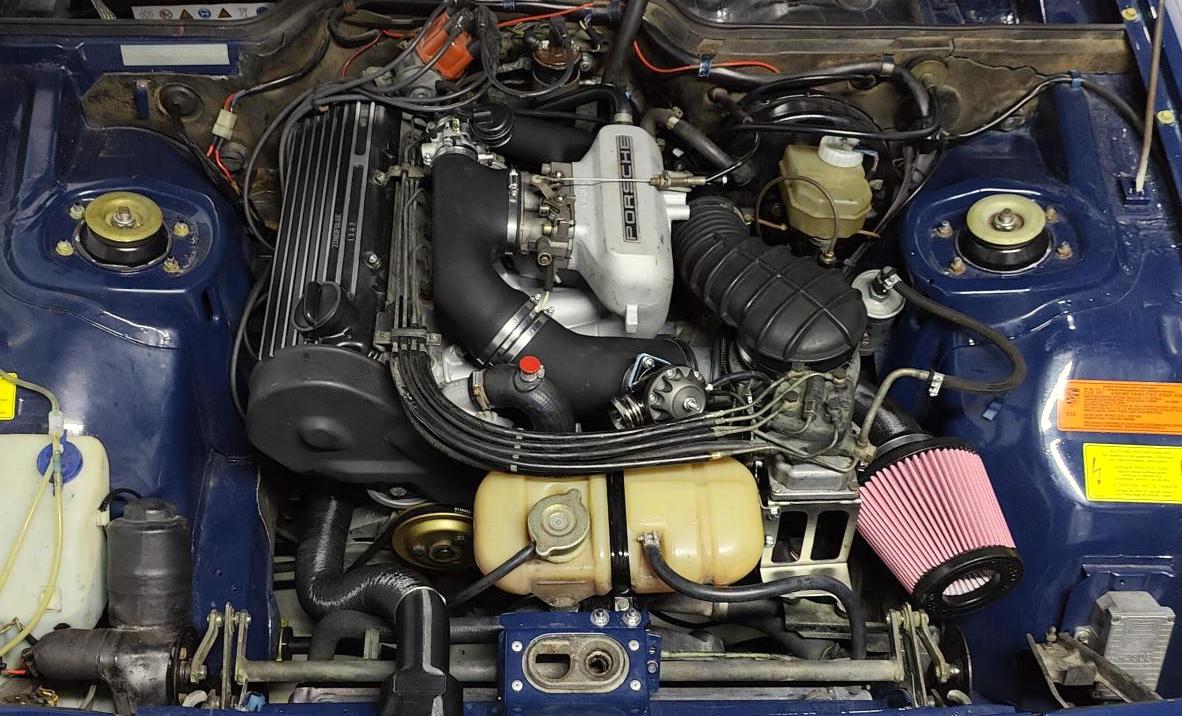Supercharger bolt on kit for the 2L Porsche 924 engine.
Boost level max 0.3bar, keep CIS and OEM ignition, no intercooler, install by yourself in a weekend.
Supercharger not included, you must find yourself the Eaton M45 from the Mini Cooper S model R52 or R53. No JCW version, just oem version with 65mm pulley. Other superchargers or variants wont fit with the kit.
The complete kit was designed in CAD, all relevant aspects calculated, simulated, prototyped and tested on real cars, in the real world.
Around 100 sets delivered so far, supercharged 924s being enjoyed in places like New York, California and other places in USA, Canada, Brisbane, Sweden, Denmark, Holland, UK, Spain, Czech Republic, Belgium and Romania.
Pricing and ordering only available trough email: m0rghen@yahoo.com
If you dont see a reply from me latest the next day after you sent your email, please check your spam folder, most likely you will find it there.
YouTube: https://youtube.com/@PorscheAddict
Instagram: https://instagram.com/the_924_com
Supercharged 924s using this kit in action:
High altitude testing the newest generation of the kit and the new alcohol injection system: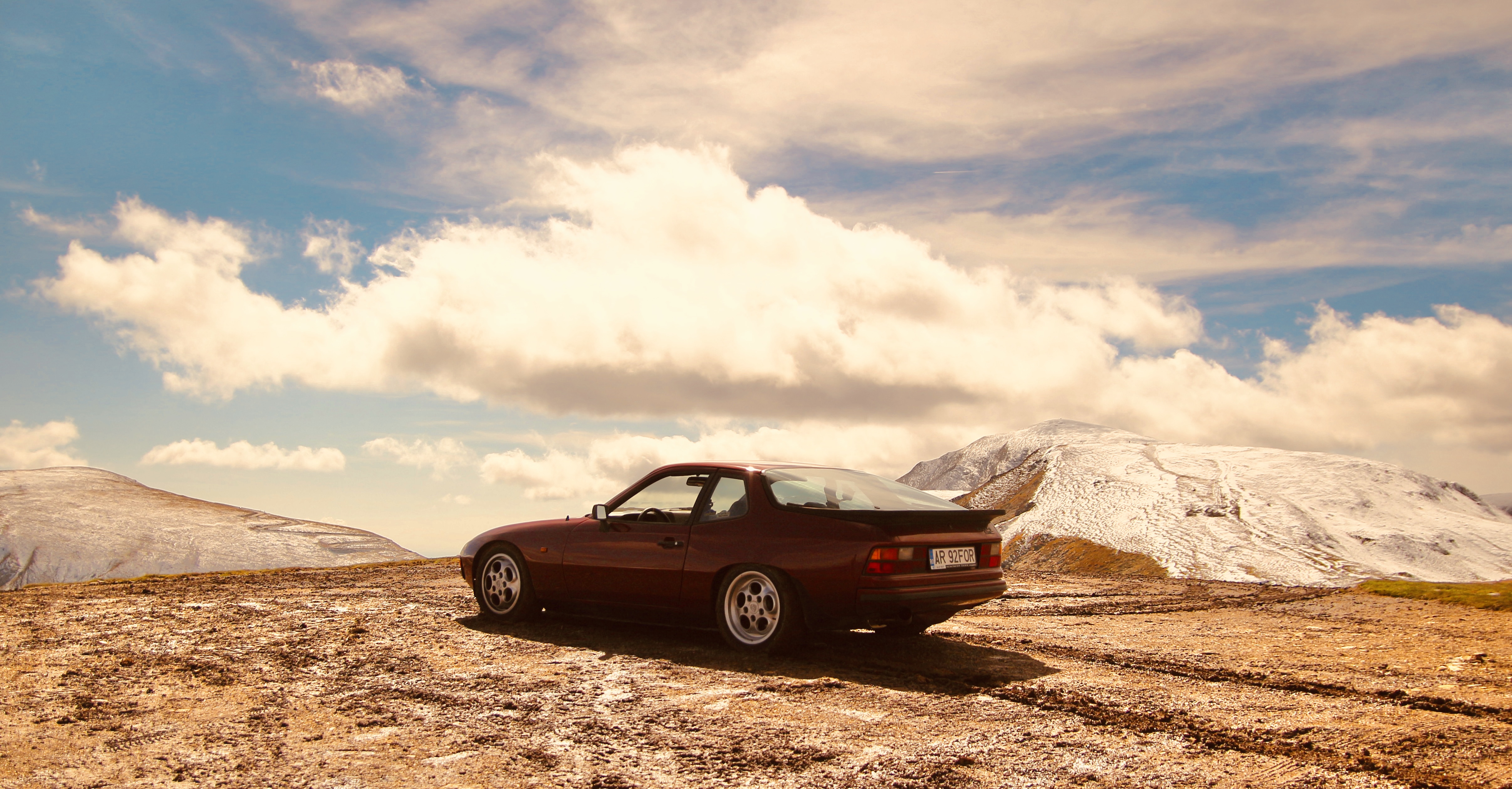
Mountain driving, high revs, max load tests:
https://youtube.com/shorts/hCzK6lJCbTI
Mountain meeting with friends and two supercharged 924s
https://youtu.be/XOCC6RZLD3c
Flyby short video of my 924SC, you need some good headphones or speakers for this:
https://youtu.be/J5ilJUzRbAA
Youtuber Jack (Number27) reviews a 924 fitted with this kit:
https://youtu.be/biVROE4WFDw
I show off the torque capability of the supercharged 924:
https://youtu.be/RJEysEeC4q4
I chase a 944 turbo on a small track in my 9 24SC:
https://youtu.be/oriS730yQLo
Erik, one of the customers, takes his 924SC to an autocross event.
https://youtu.be/phElt1IUqt0
Supercharged 924 driving sounds:
https://youtu.be/OvTaxXTW5SQ
More driving:
https://youtu.be/5UiZwEk8Upg
DISCLAIMER:
What the kit will not do:
-guarantee a power increase (this is highly dependent on many factors like conditrion of engine, fuel, your tune, etc..)
-turn your car into a race car
-make your car fast
-be legal
-make your car more fuel efficient
What the kit will do:
-give you a good time playing lego with your 924 if you're into that kind of stuff
-probably make you curse me for the more difficult part of the assembly
-enhance the driving experience with an oldschool flavor
-make your car more noisy
-possibly make you in your car quicker (if you have a good engine and tune it properly and put in the time and effort to adapt to its new character)
-crap on your fuel saving plans
-make you smile every time you drive your 924
Risks:
-this stuff is not a homologated and legal product, its up to you what you do with it, i just send you a box of parts.
-you can damage your engine if you run with bad fuel mixture and bad spark timing
-you can set fire to your car if you dont tighten and check for fuel leaks after the conversion
-you can spin out of control in low grip conditions due to the torque spike/kick that the supercharger generates
-literally anything bad can happen so keep your eyes open and your brain engaged, i just send you a box of prototypes, nothing is guaranteed, think and act accordingly!
Bolt graphic overview in PDF format, click the picture to download the PDF.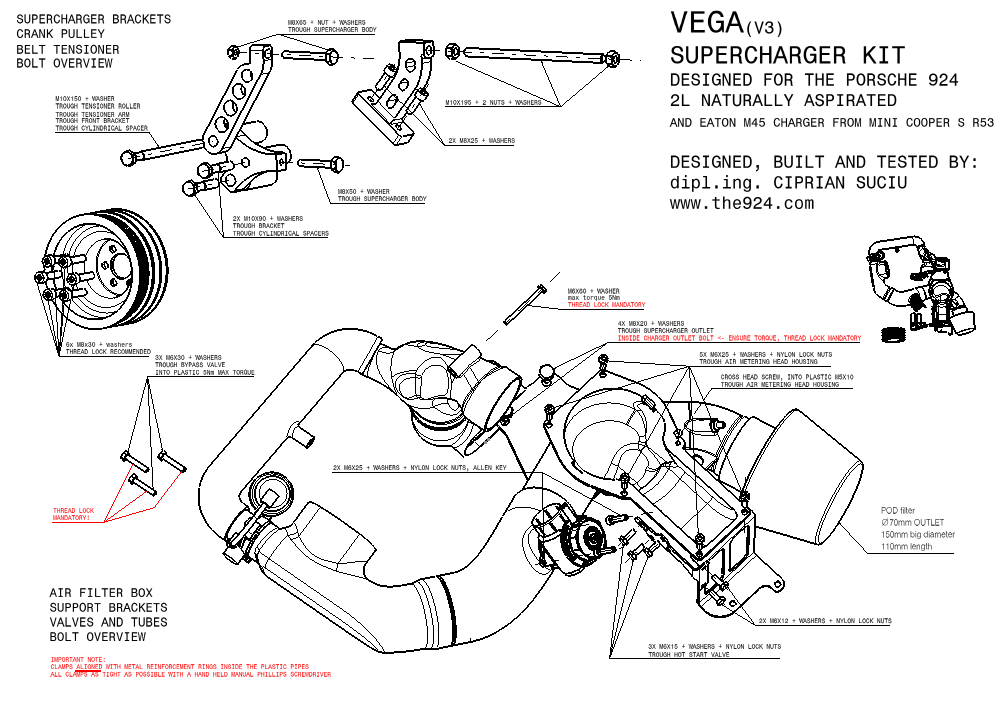
Article about this kit in the TwoFour magazine. PDF available for reading (click the picture).
Available only trough membership of the 924 owners club. https://porsche924.co.uk/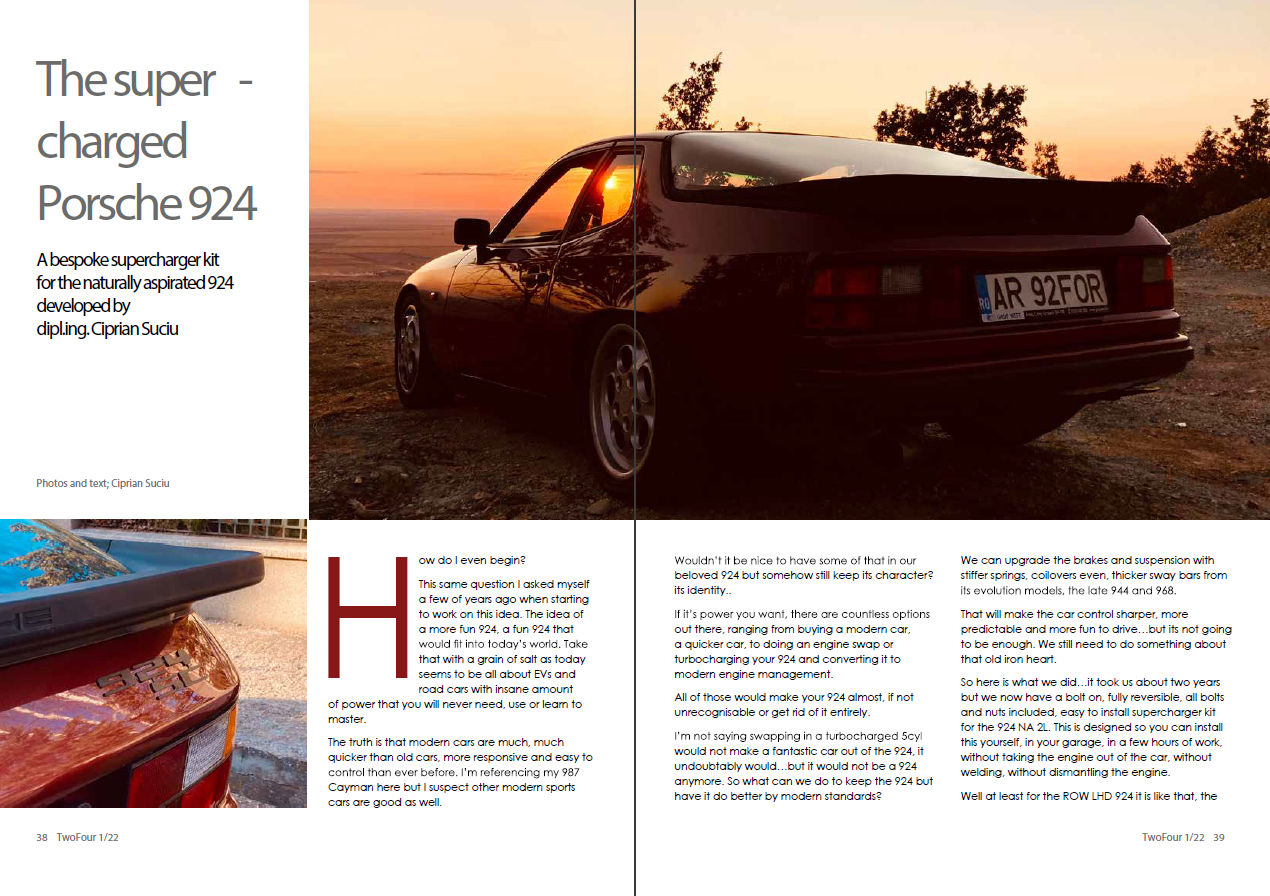
The V3 kit layed out on a table.
The VEGA 3 kit in the cleanest looking installation i've seen until now and below on my 924:
WARNING: RHD cars, factory AC cars and USA smog pump equipped cars need to retrofit the LHD non AC alternator brackets in order to be able to use this kit. Also...the factory AC compressor or that smog pump has to go..no place for them if the supercharger is installed.
WARNING: The supercharger uses the same position as the factory AC compressor, so if your car has factory AC and you still want to use it, you cant run this kit. There are aftermarket electric AC solutions out there. There are cost effective electric compressors out there, if you find one that works for the 924, let me know.
Assembly tips, lessons learned, first start tips, tuning and disclaimer at the bottom of this page, READ THEM!
Very important: DO NOT DEVIATE FROM THE RECIPE, DO NOT USE OTHER COMPONENTS, DO NOT ADD TO TKE KIT, DO NOT MODIFY THE COMPONENTS IN THE KIT. REPLICATE 100% WHAT YOU SEE IN THE VIDEOS AND DESCRIPTION BELOW.
SPECIAL USA NOTE: REMOVE AND/OR DEACTIVATE ALL REGIONAL EQUIPMENT LIKE EGR, DECEL VALVE, CHARCOAL CANISTER, IGNITION RETARD SYSTEMS. YOU NEED TO GET YOUR CAR TO REPLICATE THE EUROPEAN SETUP.
how to install video split into chapters: https://youtu.be/DizZsXy0SDU
V3 additional installation notes: https://youtu.be/toKxfaZISXw
Downloadable PDF version guide: click here
SUPERCHARGER PREP:
When you buy your supercharger, beware of the so called "rebuilt" chargers.
It can be that the muppet that did the work, undid the back plate of the rear oil bay, or even the snout and did not seal the oil bays. This can and most likely will lead to you noticing an oil leak after you are done with the conversion on your 924.
To avoid that, either re-seal the oil bays yourself or make sure the charger is either properly rebuilt by a respectable company, or not rebuilt at all and coming from a running car.
Supercharger oil service video (you must do an oil change before installing):
https://youtu.be/FA9QIXtBGuM?t=481
Tips for assembly and lessons learned from assembled kits (keep these close when doing the install, they will make sense then):
-PLEASE follow the assembly process described in the videos above, i only tested that and any other assembly order or methods may result in damaging the kit's components
-put on all the bolts in before final tightening
-properly space out hot start valve electrical connections from supercharger body or they will short on the supercharger
-the fuel return line may sweep some fuel, it will require two times tightening and some time for the hose to set on the ribbed fuel line.
-remove fuel filling cap and blow some compressed air trough the fuel return line to clear the line.
-when replacing the fuel return line hose, expect lots of fuel to pour out, have a containment plan or a plug ready.
-dont forget about the crank vent, the best solution would be to use an oil separator/catch can.
-you can run with the crank case venting to the atmosphere.
-the charger inlet manifolds are 3D printed and there may be some small loose bits of plastic inside these parts, so run a rug trough them and blow some compressed air to make sure those small bits and blobs are taken away. Its not a problem if you dont or if some do get left behind, its just plastic and the engine will simply exhaust it if they get drawn into the combustion chamber.
Special note for RHD cars: kit requires the alternator relocated to the LHD position (30mm backwards) and either exhaust manifold wrapping/ceramic coating or the original alternator shroud trimmed and re-welded.
Waterpump pulley spacer must be removed and pulley flipped around to align with the LHD position.
Crank accessories pulley must be removed and replaced with the one in the kit.
OEM part numbers for LHD alternator brackets and links where to buy:
046 903 143A LHD main alternator bracket
046 903 145A LHD front alternator bracket
046 903 255A LHD tensioner bracket
059 903 127A steel insert
059 903 263A rubber bushing
VERY special note for USA cars:
-Some USA cars have a very strange small diameter flap on the CIS metering unit.You can NOT run this small flap with the supercharger kit as it wont breathe properly. The flap diameter you want is the 80mm one, some other USA models seem to have the 77mm flap, that will work as well. I think the only cars with the small 60mm flap are the 95hp versions.
FIRST START warnings, tips and lessons learned:
-check every bolt, nut and clamp that you worked on 3 times but dont overtighten them.
-ideally you have an permanently installed wideband sensor and AFR gauge on your car.
-if you dont have one, you will have to either take the car to a dyno to be tuned or rely on reading the spark plugs colors.
-you can NOT just flog it after you installed the kit, you can damage the engine if your fuel mixture and spark advance are not set right start by driving slowly with only a fraction of throttle. This will also ensure the hoses seat properly. Re-tighten all hoses after the first drive.
-timing must be retarded approx 4-5deg compared to factory settings for the NA, if you dont have a strobe light that can show angles you will have to set timing by driving and listening for engine pinging, retard the ignition by rotating the spark distributor clockwise until there is no more pinging under maximum acceleration.
-DONT use regular fuel, even the NA demands premium, if you boost an engine you will only be running premium gas.
-if you have regular gas in your 924, take it out before driving it with the supercharger installed.
-timing belt tension is critical to the lifespan of the belt, you DO NOT need a lot of tension on the belt, it needs far less tension than the timing belt, with two fingers you should be able to twist the longer side of the belt to 100-110deg. Wrong tension will cause belt premature deterioration.
-VERY IMPORTANT: the clamps that hold the charge tubes must overlay with the metal rings/reinfocements inside the tubes. Also very important is that the first drive and warm up cycle is done at low RPM and low throttle. The plastic parts will set during the first couple of prolongued heat and they NEED TO BE TIGHTENED AGAIN.
These clamps must ALWAYS be as tight as you can get them with a hand held screw driver.
FUELING:
The kit does not make up for bad tuning or inadequate fueling, the kit just adds extra air.
It is your responsability and duty to ensure that proper fueling is delivered to your engine.
The kit has been tested with a decently working injection and the fuel is borderline sufficient for normal use of the car.
The kit was not tested in racing enviroment, you're completely on uncharted teritory there.
I have driven my supercharged 924 for approx two years now and the engine is intact and running very well.
If you are interested in running richer mixtures, there are several ways, including EFI..but the more reasonable ones would be to make your WUR adjustable (link to tutorial below) and/or add a washer to the primary pressure regulator to increase the pressure going to the injectors (link below).
Adjustable WUR tutorial: https://www.924board.org/viewtopic.php?t=39275&sid=4bec24a4386efca93443b7a8c7fc81e0
Primary pressure regulator shimming: https://www.924board.org/viewtopic.php?t=26430
TIMING:
You can NOT run the same ignition advance while supercharged as you could as naturally aspirated so you'll have to tune the ignition advance accordingly. If you car was set by the book as a NA and you just start driving with a supercharged setup, you will notice the so called pinging, or engine knock or detonation. Link with specific noise below.
That is a dangerous phenomenon for an engine, if abused and ignored, it will eventually result in piston damage or worse. The turbocharged cars that run a lot of boost are much more sensitive to this because of the high boost levels and high intake temperatures, however in the case of our application the boost level is very low and the supercharger adds minimal heat to the air. Still, the safe and right way to approach ignition tuning is to set the ignition 0deg TDC (rotate the ignition distributor CLOCKWISE for ignition retard and COUNTER-CLOCKWISE for ignition advance) and start driving the car.
Then little by little rotate the distributor COUNTER-CLOCKWISE until you hear pinging under maximum acceleration.
Then back it off a bit until you cant hear pinging while maximum acceleration.
DETONATION / PINGING:
Right below is a reference video for you to understand how detonation sounds and what you have to avoid. Listen to it at high volume and learn how the detonation sounds. The noise you have to identify is the very light rattle like, similar to dropping uncooked rice into a pan.
A short test drive where you hear this noise is not a big risk for your engine but if you ignore this, it will eventually turn into some kind of damage to the engine. So, if your car sounds like the one in the video, it either has too less fuel or too much ignition advance, or you are using the wrong type of fuel. Again, only 99+ ROZ fuel is adequate for your car, especially now with the supercharger.
https://youtu.be/jsQFlNWXzZM
SPARK PLUGS:
The 924 NA usually comes with pretty hot plugs, Bosch rating 6-7 or NGK 6. I have these in my car and they work fine, but colder plugs can lead to less chances of detonation, so they are recommended: Bosch 4 or NGK 8.
Here is a spark plug heat range chart and how the plugs in my car look like in colour as a reference for correct fueling.
You want to see light brown and a bit of dark brown (black is ok) halfway the ground electrode.
Too much light brown means a bit too lean, white means way too lean and too hot, this indicates inadequate ignition timing, bad fuel adjustment or a failure in your fueling system like bad fuel injector or insufficient fuel pressure.
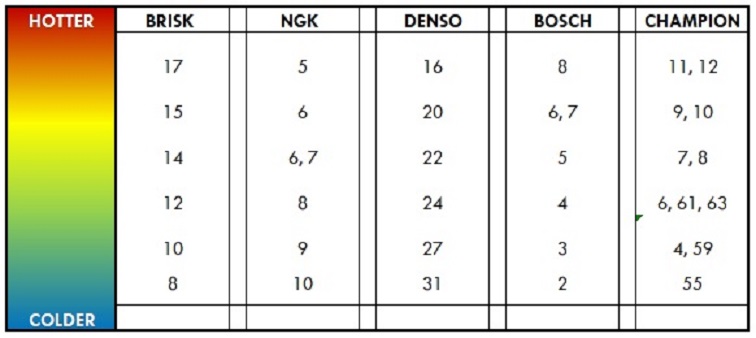
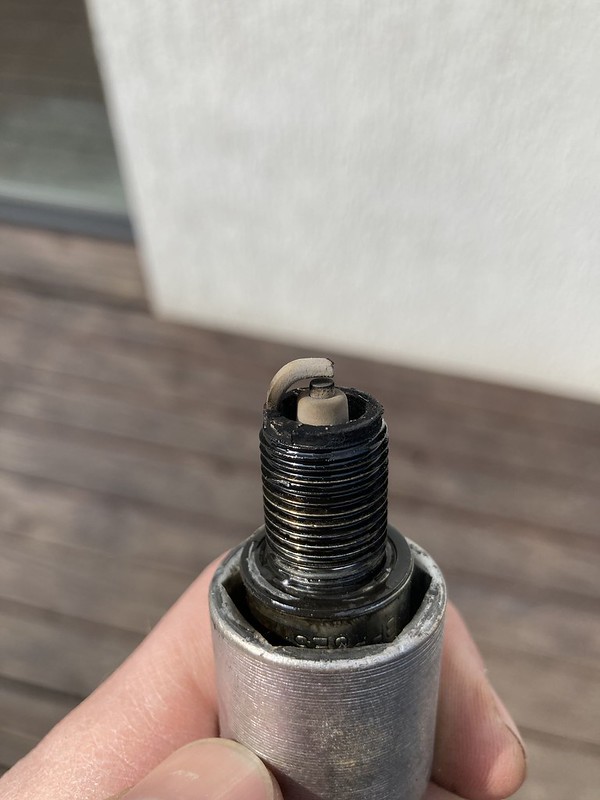
SERVICE, DISSASSEMBLY AND REASSEMBLY:
Once the process of installation is completed, the supercharger may need servicing or you'll want to rebuild your engine at some point. In that case the supercharger can come out together with its inlets and outlet and uppon reassembly it can go in like that as well. The process is identical to the initial assembly, remove the bolts, support the charger from underneath and slide it forwards.
